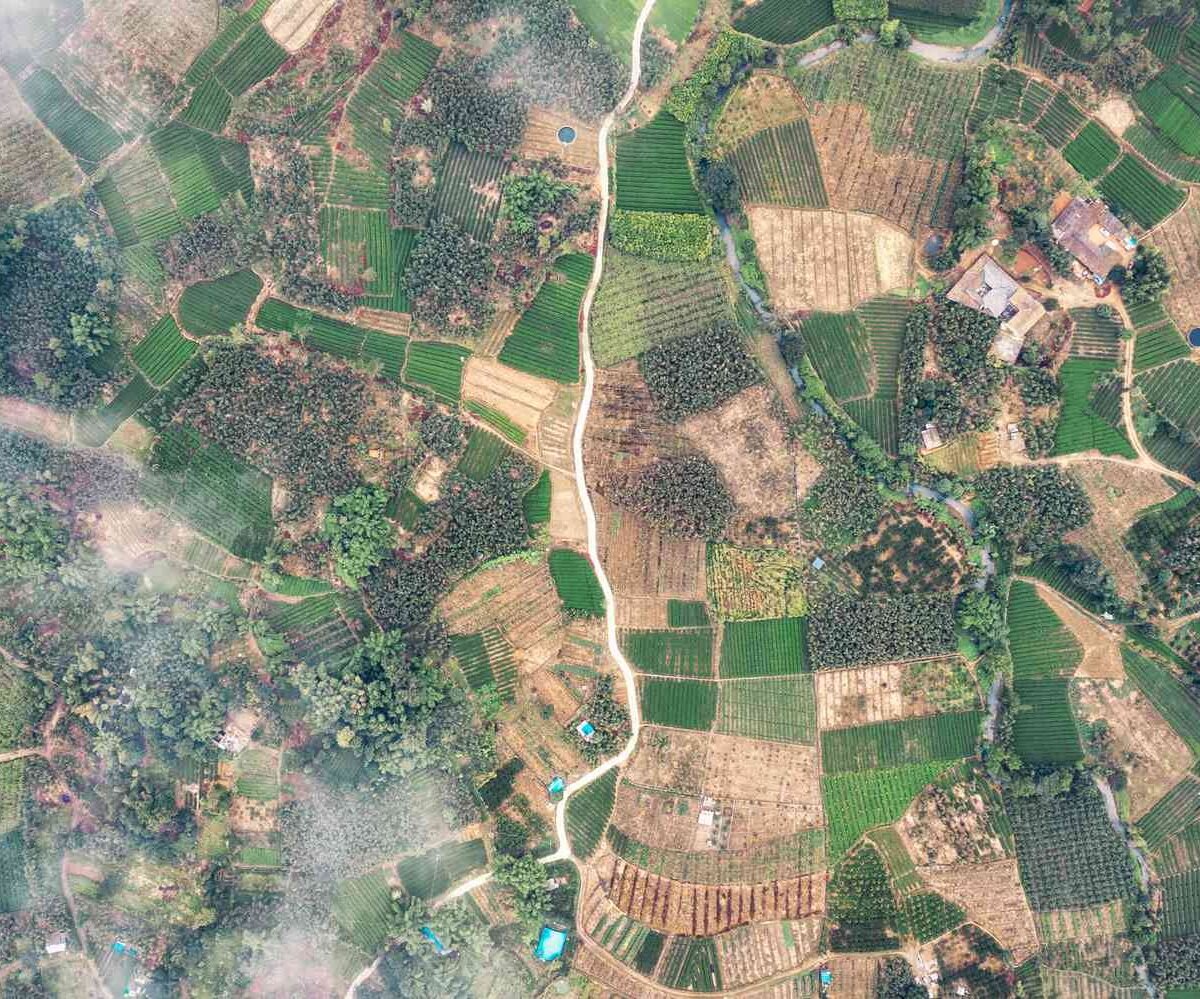Buying a big tract of undeveloped land is an option open to the wealthiest investors. People with a more modest stake can earn a reasonable return by investing in land that is already realizing its potential.
The categories, broadly speaking, include residential, commercial, and agricultural uses. But that breaks down into many options for the investor, from mineral-rich lands to vineyards, livestock ranches, and residential developments.
The investment vehicles include real estate investment trusts (REITs), exchange-traded notes (ETNs), and exchange-traded funds (ETFs).
Key Takeaways
- Raw land is a risky investment that may take generations to produce a gain, if it ever does.
- Investable land options include current or planned residential and commercial development properties; cropland and livestock-raising land; vineyards and orchards; mineral production land, and recreational land.
- Specialized land investments are available through exchange-traded funds (ETFs), exchange-traded notes (ETNs), and real estate crowdfunding sites.
- Real estate investment trust (REIT) ETFs are a solid, cost-effective choice because they do not require direct management, are broadly diversified, and can be purchased and sold on an exchange.
- Many ETFs and ETNs focus on specific land-based investment categories such as timber, minerals, and farmland.
Types of Land Investments
There are 10 general categories of potential land investments:
- Residential development land
- Commercial development land
- Row crop land
- Livestock-raising land
- Timberland
- Mineral production land
- Vegetable farmland
- Vineyards
- Orchards
- Recreational land
Residential and Commercial Land Investments
Residential and commercial land development offers a feasible entryway into land investment because an unlimited number of opportunities can be structured to meet an investor’s capital and time constraints.
Real estate investment trust exchange-traded funds are a good choice. They do not require direct management by the investor, they are broadly diversified by property type, they are geographically diversified, they can be purchased or sold on a real-time basis, and they are affordable for the small investor.
Some specialize in a type of real estate, but others, such as the Vanguard REIT ETF (VNQ), provide diversified exposure to industrial, office, retail, healthcare, public storage, and residential property developments.
Of course, these types of investments don’t grant the investor the right to use the land. If you dream of running a vineyard or digging for gold, these hands-off options are not for you.
Farmland and Livestock Operations
Land purchased for row crop farming or running a livestock operation gives the investor a hands-on option.
It’s not an option for everyone. The scale required to operate a row crop operation or livestock operation has to be very large to be financially viable. It demands a significant upfront capital outlay far beyond what most people can afford.
Moreover, the ongoing fixed costs associated with running these types of farming operations are high.
This means that the financial leverage and business risks for such operations are very high as well. The stress level can far exceed the benefits that people yearn for as landowners.
While owning a traditional row crop or livestock farming operation is probably not feasible for most small investors, many agricultural investment options provide acceptable investment exposure to traditional farming enterprises.
Your choices include funds that provide exposure to soybeans, corn, wheat, cotton, sugar, coffee, soybean oil, live cattle, feeder cattle, cocoa, lean hogs, Kansas City wheat, canola oil, and soybean meal.
ETN Options
A number of exchange-traded notes (ETNs) invest in specific types of traditional farming operations.
For example, the iPath Bloomberg Agriculture Subindex Total Return ETN (JJA) provides investment exposure to soft commodities such as corn, wheat, soybeans, sugar, cotton, and coffee. The iPath Series B Bloomberg Livestock Subindex Total Return ETN (COW) provides investment exposure to cattle and hogs.
Investors need to perform due diligence before choosing this type of fund. Some use derivative instruments such as futures contracts, adding to the level of risk in the investment.
The right ETFs or ETNs offer a good opportunity for investing in traditional large-scale farming operations.
Small Farm Investment Opportunities
For small investors who want to truly engage in land ownership, the options include timber farms, mineral development lands, vegetable gardens, orchards, vineyards, and recreational land.
The scale of the land purchase can be tailored to meet the investor’s capital constraints. These operations have the potential to generate an ongoing income stream.
With that said, a host of ETFs and ETNs are directly tied to these types of farming endeavors. Small investors could consider this hands-off option if they don’t want to commit all of their time and resources.
The Invesco MSCI Global Timber ETF (CUT) is designed to track the performance of timber companies around the world and includes holdings in firms that own or lease forested land and harvest the timber for commercial use and sale of wood-based products.
The SPDR S&P Oil & Gas Exploration & Production ETF Fund (XOP) is one of the many investment options that provide exposure to mineral land development.
Buying Row Land
If you decide to buy raw land for potential development, be prepared to deal with legal and regulatory issues. Some of the potential barriers to land development include:
- Land-use restrictions that curtail how the land can be used by its owner
- Land easements that grant access to the property to an unrelated party
- The conveyance of mineral rights that can grant authorization to extract and sell minerals from the land to an unrelated party
- Riparian and littoral rights that define the access that the landowner has to adjacent waterways
- Restraints on development if the property lies in a flood plain.
All of these potential issues can be identified in advance of any purchase. The legal specification for a parcel of land can be found in a document known as a land deed. Deeds are usually available to the public via the Internet or can be obtained by visiting the land records and deeds division of the appropriate county clerk’s office.
In addition to legal issues, investors must consider the land’s access to basic utilities such as electricity or telecommunications and consider its distance from the nearest community.
Investors should also check the land’s annual property tax obligation.
How to Value Land
Investors considering a raw land purchase are engaging in a speculative investment. Undeveloped land does not generate any income. Any return on investment will come from the potential capital gain when the land is sold.
With this in mind, the cost of debt for a farm real estate loan can be used to help conduct a preliminary investment analysis. Like any loan rates, these change with the times.
Another major consideration is the cost of development of a small farming operation.
Valuation reports are readily available and can be used to estimate the capital requirements of developing agricultural land. The agricultural departments of state universities are often a valuable resource.
An investor who wants to establish a timber farm, vegetable farm, vineyard, or orchard should be able to find a comprehensive and timely analysis that explains how to establish the operation, the amount of work involved, the capital outlay required, the length of time necessary to get a return on investment, and the likely return on investment that a small-farm operation can achieve over time.
Who Are America’s Largest Landowners?
The largest landowner in the U.S. according to The Land Report, is the Emmerson family, which owns an enormous conifer seedling nursery in Northern California.
Famous names on its top 10 list of landowners include CNN founder Ted Turner, who owns two million acres of land in the Western U.S.
Its list of “trending landowners” who are acquiring large tracts include Microsoft founder Bill Gates and Amazon founder Jeff Bezos.
What Is Raw Land?
Raw land is property that is undeveloped. It is not used for any income-producing activity like farming, mining, or housing. It is off-the-grid, with no public utilities and little or no road access. In the U.S., most raw land is in remote rural areas.
What Is Row Cropping?
Row cropping, or row farming, is a system of growing crops along horizontal lines rather than in clumps. Machinery can be used to reduce some of the labor involved. Row cropping has other benefits, including maximizing sunlight exposure and regulating wind flow.
The Bottom Line
In most cases, buying raw land is an option for the very wealthy.
Most of the rest of us can satisfy a yearning for land ownership by investing in productive land through ETFs and ETNs. Unlike raw land, they can immediately generate a reasonable return on investment without a substantial investment of time and money




